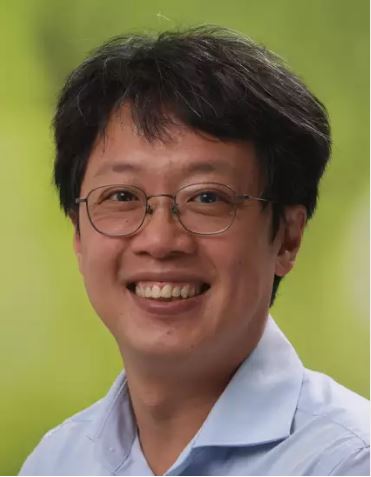Advanced TEM characterizations of battery and catalytic materials
July 25, 2025; MSE Conference Room
Cook Hall - Room #2058; 10:30 - 11:30 AM (CT)
Coffee will be provided!
Registration is not required for this event.
Seminar Speaker
 Dr. See Wee Chee
Dr. See Wee Chee
Fritz Haber Institute (FHI) - Max Planck Society
"Combining Microscopes: Correlative Operando Spectro-Microscopy as a Bridge between Microscopy and Spectroscopy of Working Electrocatalysts"
Abstract:
Electrocatalysts exist within a complex reaction environment and experience (electro)chemical driving forces that can change their structure and composition from their as-synthesized state and during sustained operation. It is, therefore, crucial that we understand how the working state of the catalyst evolves under operating conditions if we are to relate catalyst morphologies with their associated catalytic performance. The need to provide insights under working conditions and inform the design of catalysts for various green energy applications has driven the widespread development and adoption of operando techniques, but there is still a crucial gap in our current methods because they largely fall under two categories, broad beam spectroscopy techniques sensitive to the ensemble chemical signatures of the catalytic system or microscopic techniques capable of high spatial resolution imaging but provide limited information about the catalyst's chemical state. In this presentation, I will first discuss my group's work using electrochemical liquid cell transmission electron microscopy (EC-TEM) to follow the restructuring of electrocatalysts in a spatially and temporally resolved manner. Then, I will discuss our work using these cells employed for EC-TEM studies inside transmission X-ray microscopes to obtain spectro-microscopic data that reveal the local chemical state of individual electrocatalyst particles under conditions identical to the EC-TEM studies. The ability to complement nanoscale microscopy and ensemble spectroscopy with the structure and chemical composition of electrocatalysts under reaction conditions allows us to connect different operando methods and provide new insight into the transient or minority catalyst motifs that exist during reaction.
Biography
See Wee Chee is the group leader for liquid phase electron microscopy in the Department of Interface Science at the Fritz Haber Institute (FHI) of the Max Planck Society. He graduated with a B.Appl.Sc. from the Materials Science department in the National University of Singapore and then, with a PhD in Materials Science and Engineering from the University of Illinois at Urbana-Champaign. His research group in Berlin, Germany focuses on studying the transformations that take place in electrocatalysts under applied potential and in the electrolyte with liquid phase electron microscopy. Recently, they have also started to conduct operando microscopy experiments at the X-ray synchrotron beamlines.
